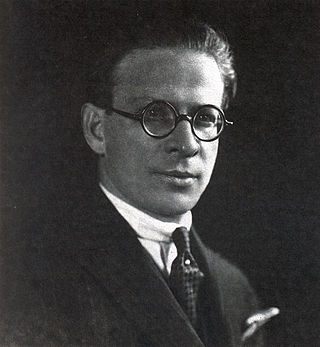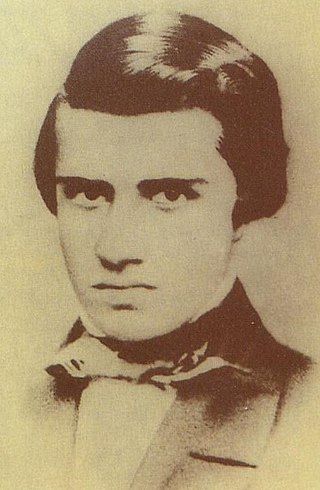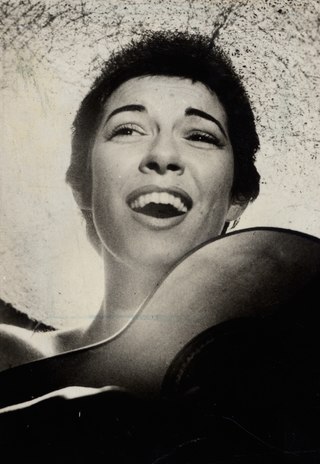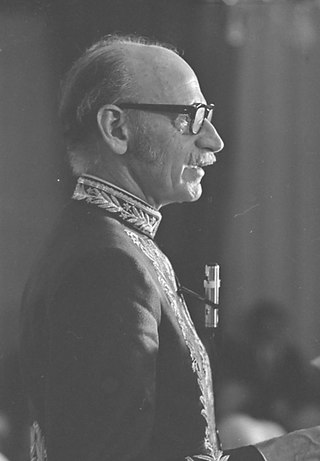
Joaquim Maria Machado de Assis, often known by his surnames as Machado de Assis, Machado, or Bruxo do Cosme Velho, was a pioneer Brazilian novelist, poet, playwright and short story writer, widely regarded as the greatest writer of Brazilian literature. Nevertheless, Assis did not achieve widespread popularity outside Brazil during his lifetime. In 1897, he founded and became the first President of the Brazilian Academy of Letters. He was multilingual, having taught himself French, English, German and Greek later in life.

Brazilian literature is the literature written in the Portuguese language by Brazilians or in Brazil, including works written prior to the country's independence in 1822. Throughout its early years, literature from Brazil followed the literary trends of Portugal, whereas gradually shifting to a different and authentic writing style in the course of the 19th and 20th centuries, in the search for truly Brazilian themes and use of Brazilian forms.

Manuel Carneiro de Sousa Bandeira Filho was a Brazilian poet, literary critic, and translator, who wrote over 20 books of poetry and prose.

Mário Raul de Morais Andrade was a Brazilian poet, novelist, musicologist, art historian and critic, and photographer. He wrote one of the first and most influential collections of modern Brazilian poetry, Paulicéia Desvairada, published in 1922. He has had considerable influence on modern Brazilian literature, and as a scholar and essayist—he was a pioneer of the field of ethnomusicology—his influence has reached far beyond Brazil.

José Oswald de Souza Andrade was a Brazilian poet, novelist and cultural critic. He was born in, spent most of his life in, and died in São Paulo.

Paulo Menotti Del Picchia was a Brazilian poet, journalist, and painter. He is associated with the Generation of 1922, the first generation of Brazilian modernism artists.

The Modern Art Week was an arts festival in São Paulo, Brazil, that ran from February 10 to February 17, 1922. Historically, the Week marked the start of Brazilian Modernism; though a number of individual Brazilian artists were doing modernist work before the week, it coalesced and defined the movement and introduced it to Brazilian society at large. For Brazil, it was as important as the International Exhibition of Modern Art, held in New York City in 1913, which became a legendary watershed date in the history of American art.

Manuel Antônio Álvares de Azevedo, affectionately called "Maneco" by his close friends, relatives and admirers, was a Brazilian Romantic poet, short story writer, playwright and essayist, considered to be one of the major exponents of Ultra-Romanticism and Gothic literature in Brazil. His works tend to play heavily with opposite notions, such as love and death, platonism and sarcasm, sentimentalism and pessimism, among others, and have a strong influence of Musset, Chateaubriand, Lamartine, Goethe and – above all – Byron.

Paulo Leminski Filho was a Brazilian writer, poet, translator, journalist, advertising professional, songwriter, literary critic, biographer, teacher and judoka. He was noted for his avant-garde work, an experimental novel and poetry inspired in concrete poetry, as well as abundant short lyrics derived from haiku and related forms. He had a remarkable poetry, as he invented his own way of writing, with puns, jokes with popular sayings and the influence of haiku, in addition to abusing slangs and profanity.

Ignez Magdalena Aranha de Lima Barroso was a Brazilian sertanejo singer, guitarist, actress, TV presenter, librarian, folklorist and teacher.

The creation of art in the geographic area now known as Brazil begins with the earliest records of its human habitation. The original inhabitants of the land, pre-Columbian Indigenous or Natives peoples, produced various forms of art; specific cultures like the Marajoara left sophisticated painted pottery. This area was colonized by Portugal in the 16th century and given the modern name of Brazil. Brazilian art is most commonly used as an umbrella term for art created in this region post Portuguese colonization.

Luís Nicolau Fagundes Varela was a Brazilian Romantic poet, adept of the "Ultra-Romanticism" movement. He is patron of the 11th chair of the Brazilian Academy of Letters.

Teófilo Odorico Dias de Mesquita was a Brazilian poet, journalist and lawyer, nephew of the famous Romantic author Gonçalves Dias.

Patrícia Rehder Galvão, known by her pseudonym Pagu was a Brazilian writer, poet, playwright, journalist, and translator who had a large role in the Brazilian Modernist movement. Pagu was also politically active, being associated to the Brazilian Communist Party during the 1930 decade.

Events in the year 1926 in Brazil.

Events in the year 1935 in Brazil.

Events in the year 1963 in Brazil.

Bernardo Élis Fleury de Campos Curado was a Brazilian lawyer, professor, poet, short story writer and novelist. He was the son of the poet Érico José Curado and Marieta Fleury Curado. He studied law and worked as a public servant and teacher.

Cândido Motta Filho was a Brazilian lawyer, professor, journalist, essayist and politician.

Lupe Cotrim or Lupe Cotrim Garaude was a Brazilian poet and university professor.




















